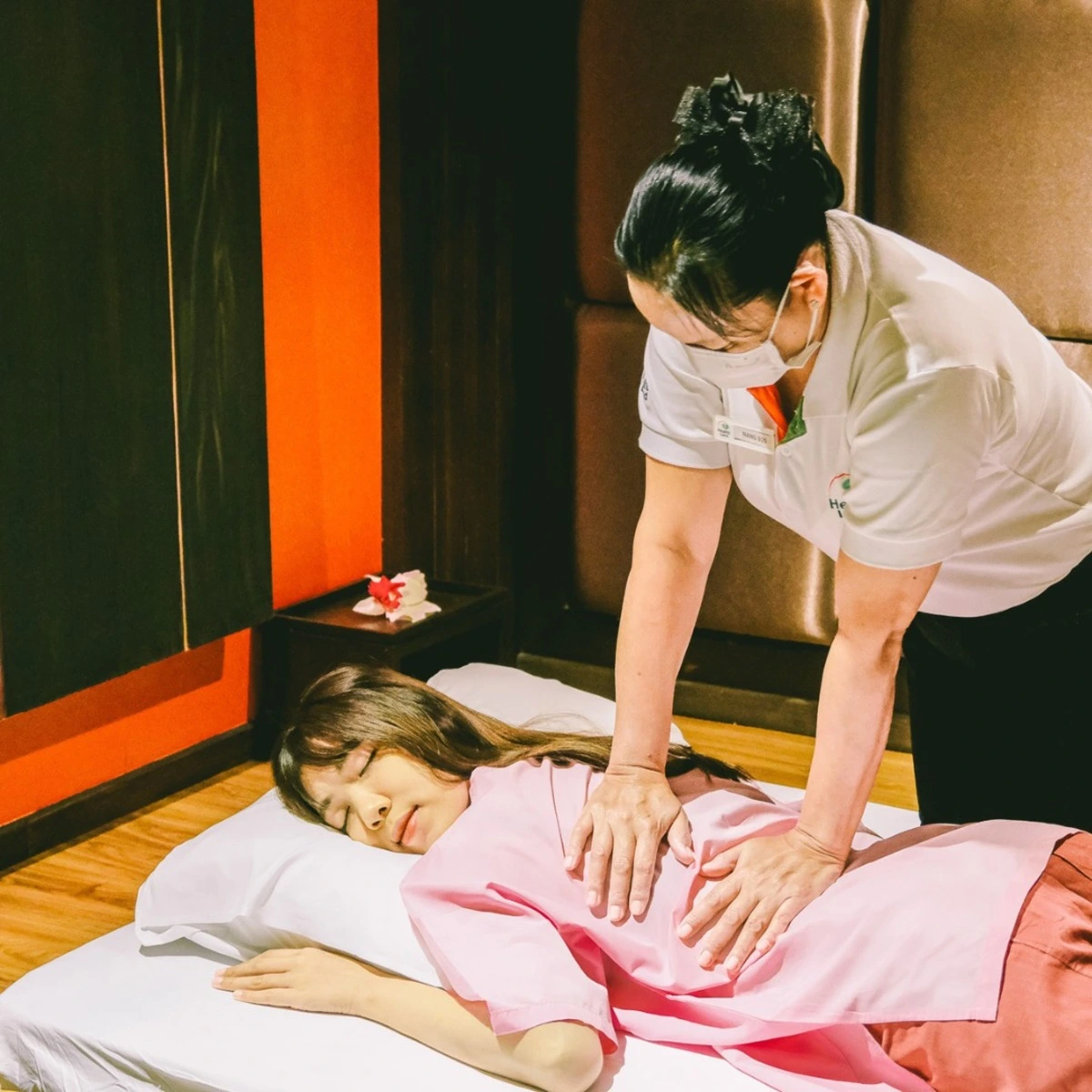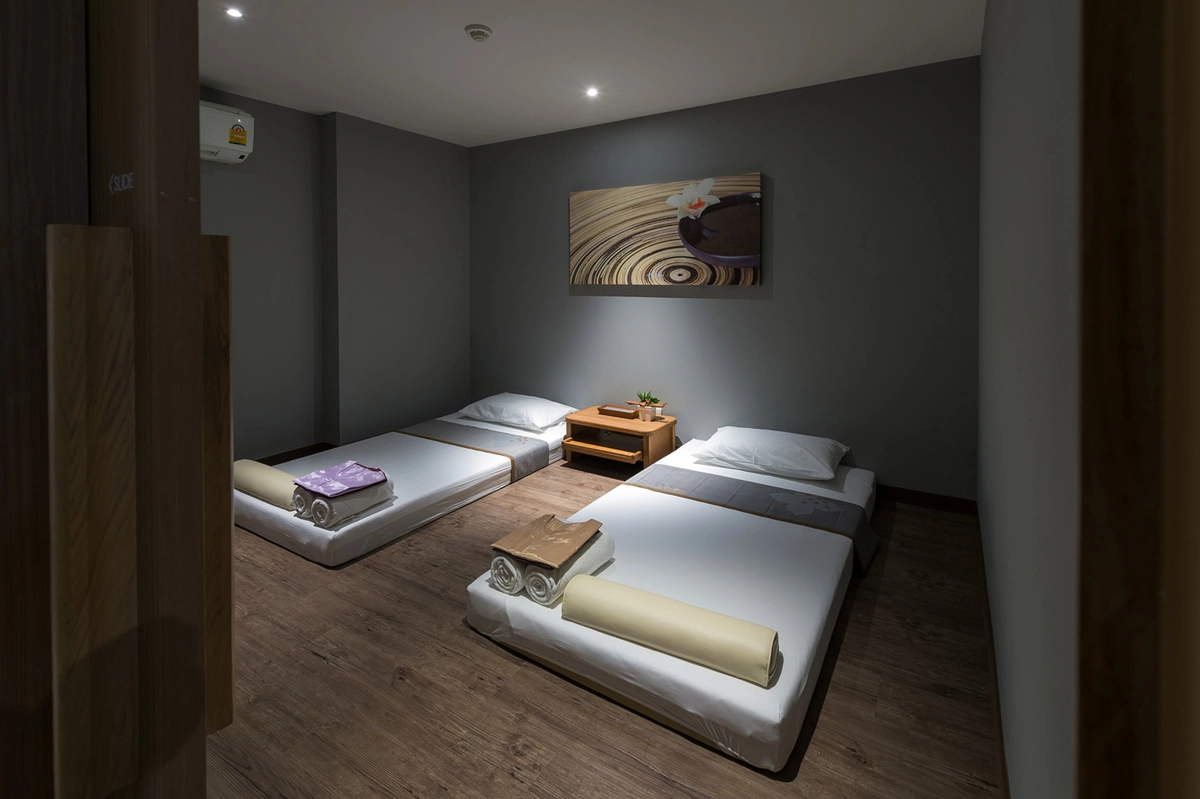Thai fully body massage tips and benefits

Living in Thailand, you’re no stranger to the country’s rich tradition and lively lifestyle. But have you ever truly indulged in one of its most renowned traditions? A Thai full body massage
isn’t just an indulgence; it’s an experience that blends ancient techniques with modern relaxation, offering unparalleled benefits for your mind and body.
As an expat, navigating the various massage options can be overwhelming. Whether you’re seeking relief from the stresses of daily life or simply want to pamper yourself, understanding what to expect from a Thai full-body massage can make all the difference. Dive into this guide and discover why this age-old practice is a must-try for anyone living in the Land of Smiles.

What is a full body massage in Thailand?
A Thai full body massage is an essential experience when visiting Thailand. This unique shape of body massage blends ancient techniques that have evolved over centuries. This shape of massage has deep roots in ancient Ayurvedic principles and spans over 2,500 years.
When you get a Thai full-body massage, expect the therapist to guide you through various stretches and apply rhythmic pressure along your body’s energy lines, known as Sen. Unlike traditional massages, you keep your clothes on and lie on a mat on the floor rather than a table.
It’s common to feel both relaxed and invigorated after the session. The stretching and manipulation help improve flexibility and relieve tension. Many tourists find this specifically beneficial after long flights or busy days exploring.
Practical advice for tourists getting full body massage
-
Hydrate: Drink plenty of water before and after your massage. This helps in flushing out toxins released during the massage.
-
Meal timing: Avoid heavy meals right before your session. It’s best to eat something light a few hours beforehand.
-
Clothing: Wear loose and comfortable attire. You’ll likely be lying on a mat, and ease of movement is essential for a better experience.
-
Finding a reputable spa: Phuket, like many tourist spots in Thailand, has numerous massage centres. Look for recommended ones through hotel suggestions or online reviews to ensure you get a professional service.
Benefits of getting this massage
- Improved Circulation: The combination of stretching and pressure helps enhance blood flow, delivering oxygen and nutrients to muscles while promoting overall health.
- Increased Flexibility: The stretching techniques used during the massage improve flexibility in joints and muscles, making it beneficial for those with stiffness or limited mobility.
- Stress Reduction: Thai massages activate the body’s relaxation response, reducing stress hormones and promoting mental calmness. This can lead to improved mood and emotional well-being.
- Relief from Muscle Tension: By targeting specific pressure points, Thai massages effectively relieve muscle tension and alleviate chronic pain conditions. The deep pressure applied can help release knots and tightness in muscles.
- Enhanced Energy Flow: The practice is based on the concept of clearing energy pathways in the body. By working on these pathways, therapists aim to restore balance and promote overall vitality.
Different types of full body massages in Thailand
1. Traditional Thai massage (Nuad Thai)
If you’re after an authentic Thai body massage experience, you need to try the Traditional Thai Massage. This ancient method combines acupressure, Ayurvedic principles, and assisted yoga postures. The therapist uses their hands, elbows, knees, and feet to apply pressure along your body’s energy lines (Sen) and guide you through yoga-like stretches. This technique boosts flexibility, reduces muscle tension, and enhances overall energy flow.
2. Thai oil massage
For a gentler, more relaxing option, consider the Thai Oil Massage. This type of full body massage incorporates aromatic oils, like coconut or lemongrass, making it a soothing choice. The therapist uses smooth, gliding strokes with gentle-to-firm pressure, helping you relax deeply. Unlike the Traditional Thai Massage, you may lie on a massage table and wear minimal clothing. This massage leaves your skin nourished and your mind refreshed.
3. Thai herbal compress massage
This therapy blends traditional Thai massage techniques with soothing heated herbal compresses. Poultices filled with fragrant herbs like lemongrass and ginger gently pressed onto your body. The heat from the compresses helps penetrate deep into the muscles, easing pain and inflammation while revitalizing your skin. This type is particularly beneficial for those suffering from chronic muscle tension.
4. Aromatherapy massage
This gentle massage is all about you, incorporating essential oils that match your personal preferences. With soft pressure and lovely aromatic scents, it creates a soothing atmosphere that promotes relaxation and emotional well-being. It’s perfect for anyone looking for a calming experience without the intensity of deep physical manipulation. Just close your eyes and let the peaceful vibes wash over you.
What to expect during a Thai full body massage
Before your massage
Preparation: You’ll be led to a dimly lit room with a mattress on the floor or sometimes a massage table. The room is often soothing, with calming music and possibly curtain dividers if you’re in a shared space.
Communication: full duration of your massage without any rush. Being early also gives you time to relax and mentally prepare for your Thai massage. Inform your therapist about any health conditions, injuries, or areas of discomfort before the session starts. This helps them adjust the massage to your needs. Clear communication ensures that the therapist can provide a safe and effective body massage, considering any specific areas you might want to focus on.
During your massage
Pressure points: Throughout the session, the therapist will focus on various pressure points. These points match with your body’s energy lines, known as Sen. By targeting these areas, the massage aims to balance your energy flow and promote overall well-being.
Movement: You’ll find yourself in different positions during the massage. Don’t be surprised if you’re guided through stretches or asked to change positions. These movements are part of the therapeutic process and enhance the effectiveness of the massage.
After your massage
Relaxation: After your session, take a moment to relax and absorb the benefits of the massage. It’s common to feel a bit lightheaded or sleepy, so sitting quietly for a few minutes can help you regain your bearings.
Feedback: If you enjoyed your massage, share your experience with the therapist or leave a review online. This not only helps the business but also guides other tourists in finding quality services.
Where to find the best full body massages in Thailand
Recommended Bangkok spas
-
Health Land: This popular chain is well-known for its high-quality massages. You’ll find it in multiple locations across the city. Many business professionals prefer Health Land, and it doesn’t offer inappropriate services.
-
Let’s Relax: Another recommended chain with several branches. They offer traditional Thai massages. Visit their branch in Grande Centre Point Sukhumvit 55 for a special experience that includes Japanese-style hot springs and complimentary mango sticky rice after your treatment.
-
Panpuri Spa: Located in Gaysorn Tower, this luxurious spa provides private onsen rooms for an exceptional experience.
-
Heera Thai Massage and Aromatherapy: This affordable spa offers a range of treatments including traditional Thai massages and foot massages in a serene setting.
Recommended Chaing Mai spas
-
Fah Lanna Spa: Located in the Old City, it’s highly rated for its serene environment and skilled therapists. They offer a variety of treatments including traditional Thai massages.
-
Kiyora Spa: Offering relaxing full body massages, this spa focuses on providing a tranquil experience. Their staff are professional, ensuring you leave feeling refreshed.
Recommended Phuket spas
-
Oasis Spa: Positioned in several locations around the island, Oasis Spa is famous for its luxurious settings and extensive treatment menu, including traditional Thai massages.
- De Flora Spa: Located in Patong Beach, this spa offers affordable yet professional full body massage services perfect for relaxing after a beach day.
-
- Address: Pa Tong, Kathu District Phuket 83150
Recommended Pattaya spas
-
Health Land: Just like in Bangkok, Health Land in Pattaya is a reliable choice for high-quality Thai massages.
- Let’s Relax Pattaya: Similar to their Bangkok branches, they offer excellent full body massages. You get a serene environment and experienced therapists.
Cost of full body massages in Thailand
When you’re in Thailand, getting a full body massage is both affordable and luxurious. Prices vary depending on where you go. In local parlours or smaller establishments, you’ll usually pay between 300 and 500 Thai Baht (THB) per hour. That’s roughly $8 to $15 USD. These places offer authentic Thai massages at a great value.
If you head to luxury spas or upscale establishments, specifically in tourist hotspots like Bangkok or Phuket, expect to spend between 600 and 800 THB per hour. This translates to about $18 to $25 USD. These high-end places often provide extra amenities like herbal teas, private rooms, and a more tranquil atmosphere.
Myths about Thai massages
-
Too painful to enjoy
Many believe that Thai massages are excessively painful. While these massages involve deep pressure and stretches, you can always communicate with your therapist to adjust the intensity. Your comfort is their priority. -
Only for the flexible
Some think Thai massages require you to be very flexible. In reality, therapists guide you through the stretches and adjust techniques to suit all flexibility levels. Even if you’re not flexible, you can still enjoy the benefits. -
Only for pain relief
Thai massages are often thought to be solely for pain relief. They also improve flexibility, boost circulation, and promote overall wellness, making them ideal for relaxation and revitalisation post-travel.
How often should you get a full body massage?
Based on health goals and needs
-
Pain management and injury recovery: If you have pain or are recovering from an injury, you might benefit from a full body massage once or twice a week. As your body heals, you can gradually reduce the frequency to once a week or every two weeks.
-
Chronic health conditions: For chronic issues, a weekly full body massage can be very helpful. Adjust the frequency based on how your body responds.
-
Athletes and active individuals: If you’re into sports or lead an active life, a full body massage every 2-3 weeks is recommended. This helps in preventing injuries, improving performance, and aiding recovery. You might need massages more often if you’re training for an event or dealing with strains.
Now that you understand everything about full body massage in Thailand, we hope you are planning to get one soon. Just make sure that the shop has certified professionals who know what they are doing, and always negotiate the price before doing one!
Latest Thailand News
Follow The Thaiger on Google News:


























